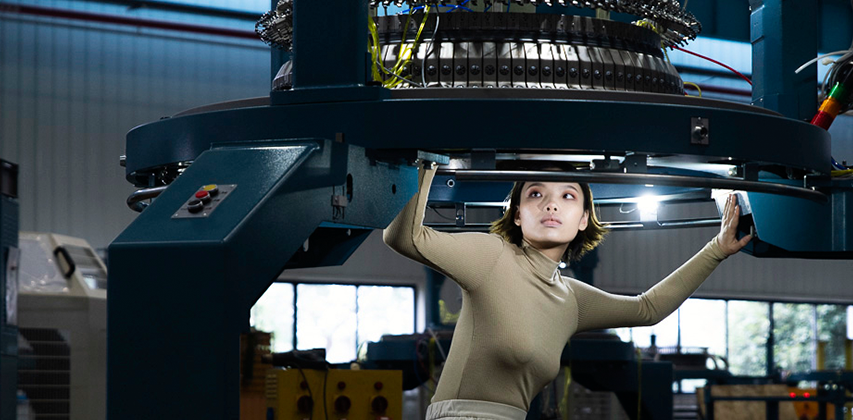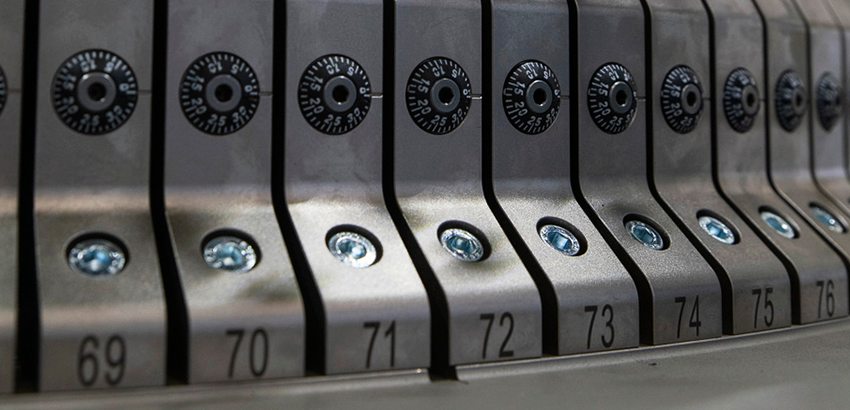机器技术详解 Machine Technology in Detail
无缝技术的细节和应用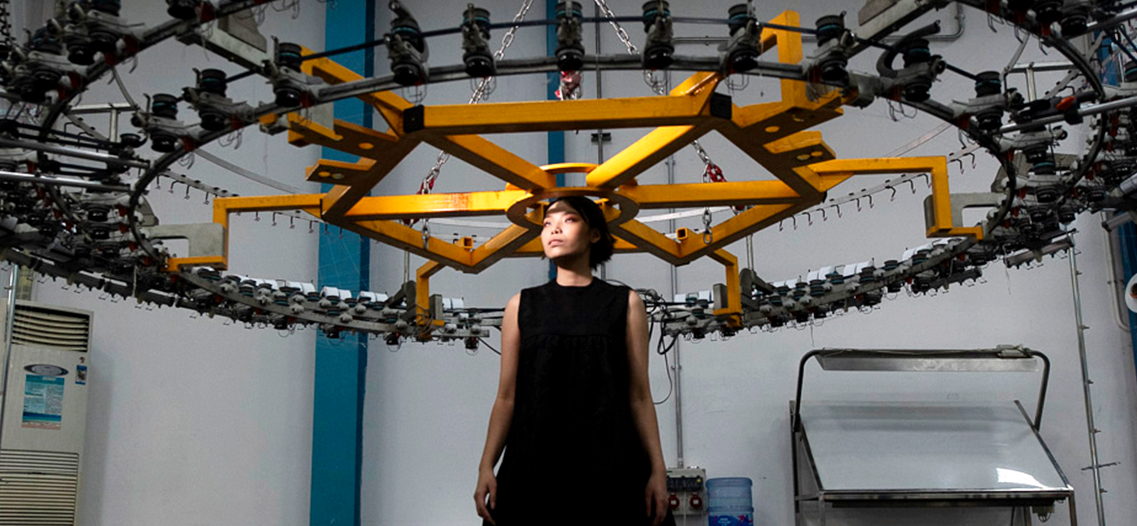
机器技术详解
在本展示中,我们将介绍与编织技术相关的基本信息,以及其应用和特点。我们还将介绍iPolaris软件的优点,以帮助您正确设置设计。您将能够扩展您的技术知识,并与编织工程师和团队更好地沟通。
请记住,此展示与早期的“编织技术和应用”模块相关,如果您尚未阅读,我们强烈建议您阅读。您可以在此处查看。
在本展示的结尾,您已学到:
- 什么是横针和纵针?
-
如何在设计中应用针密度?
- 我们所说的技术面和技术背面是什么意思?
- 更详细地了解编织机械,以便更容易地在iPolaris中应用和找到合适的设置。
不再拖延,让我们开始吧!

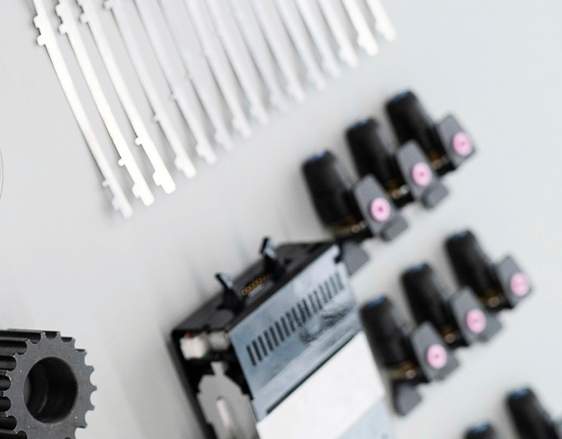
条横向
条横向是一列主要是垂直的交错针织环,通常是由同一根针在连续(不一定全部)的编织周期内产生的。一条横向从一个空针开始编织。
- 当进行环的转移时,可以将一个横向的环从一个针A转移到另一个针B,并重新开始用第二个针编织,这样,多个针会在同一条横向上产生交错的环。(如果针B连续编织,那么由针A编织的横向将与之合并)。
- 在经编织中,如果同一根经引导线在连续的编织周期中环绕同一根针,就可以产生一条横向。
- 横向通过横向环(经编织)或底裤(经编织)在织物宽度上连接在一起。
- 横向最清晰地显示在单针床织物的技术面上,而在技术背面上则显示编织周期。
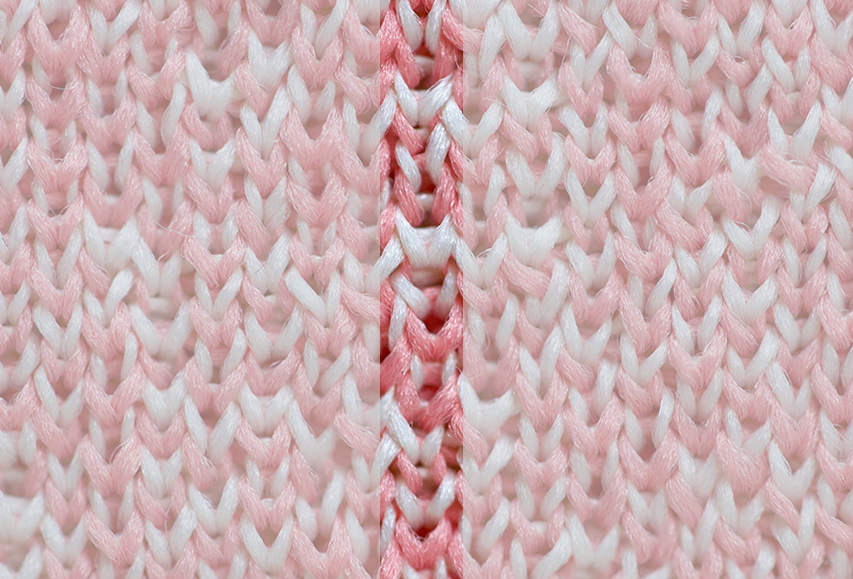
横排
横排是由相邻针在同一编织周期内产生的主要是水平的针织环(在竖立织物中编织)。
横排的长度
在经编织织物(除了诸如提花、镶嵌和经插入等结构)中,一横排的环由一条称为横排长度的单一长度的纱线组成。经编织结构将从最后编织的横排开始解开,除非它被固定,例如通过结束。
图案排
图案排是由同一针床上的相邻针产生的一横排的针织环。在普通的经编织织物中,这与一横排相同,但在更复杂的织物中,一个图案排可能由两个或更多横排长度组成。在经编织中,每个横排中的每个环通常由单独的纱线组成。
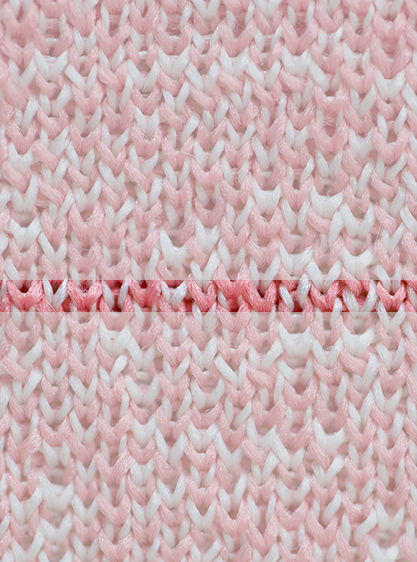
Stitch Density
针密度是指在一定面积的织物中的总针织环数,而不是环中的纱线长度(针长)。它是在给定区域内(如一平方英寸或三平方厘米)的总针织环数。该数字是通过计算一英寸(或三厘米)内的横排或图案排数以及一英寸(或三厘米)内的经的数目,然后将横排数乘以经数得到的。
不同的针密度允许您使用不同长度的针织环,提供各种纹理,控制织物的松紧程度。
专用的编织软件iPolaris允许您通过其BODYKNIT功能轻松计算开发的针密度,这是一个专门用于叠加的计划,在设计中可以轻松插入不同网格密度区域(以%表示)。有关此软件的更多信息,请阅读有关iPolaris的更多信息。 here.
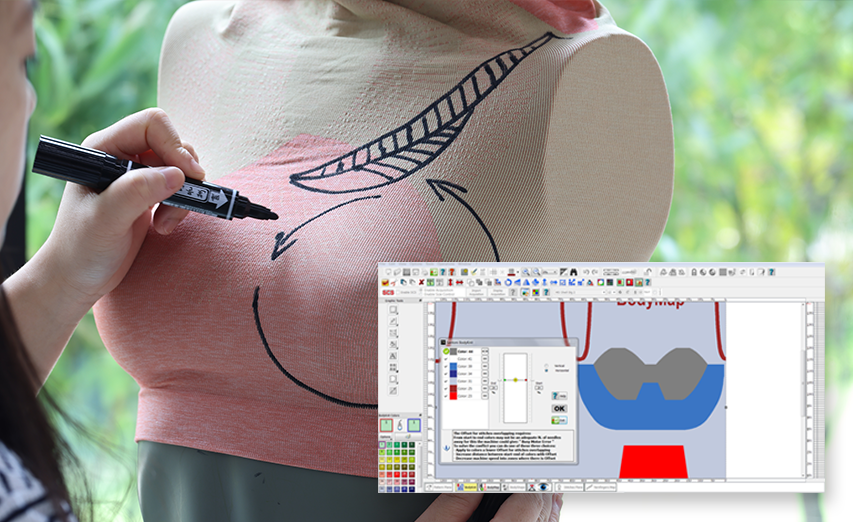
技术面和技术背面
单面结构由针(以直线或圆形排列,钩朝外)作为单个组来操作,在经编和纬编中产生。因此,相邻的针的钩都朝向同一个方向,针头总是将新的环向下穿过旧的环,方向相同。
技术正面
织物的技术正面往往以环的侧面肢或重叠的形式显示为一系列相互契合的V形。面部环侧是针上的线环的底面。

技术背面
技术背面是与面环侧相对的一侧,显示为吊针环或下滑的形式的反面针迹,以及线环的头部。

双面结构
在纬编和经编中,当两组独立控制的针受到控制时,双面结构就会产生,其中一组针的钩面或朝向与另一组针的相反。因此,这两组针从相同的纱线中以相反的方向拉取它们的线环,以便在两组针之间形成的织物上显示一组针的面环在一侧,而另一组针的面环则在相反的一侧。
织物的两个面由吊针环或下滑环固定在一起,这些环位于织物内部,使得反面针迹往往被隐藏。两个面可能由不同的纱线编织而成,因此形成的两种织物可能偶尔才会连接在一起。有时,两个面是一体制成的,而且彼此之间的距离足够远,以便切断连接的吊针环或下滑环,以产生两种单面织物。
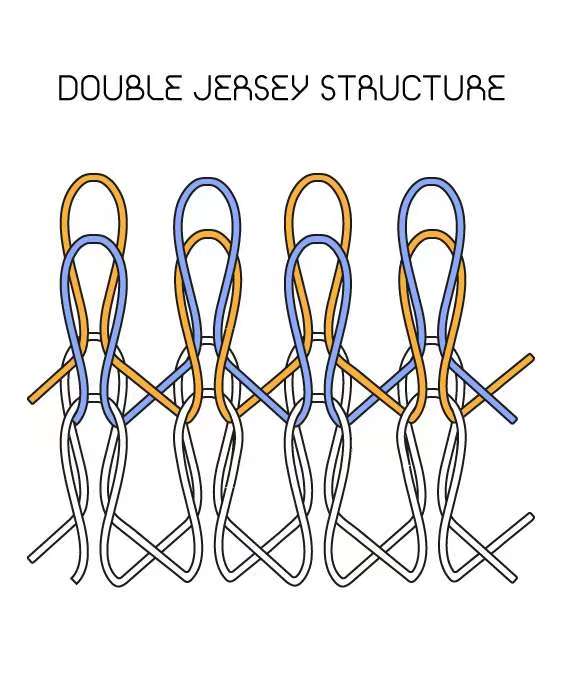

针
编织机上可以使用三种不同类型的针:
-
复合针
-
钩针
-
须针(弹簧针)
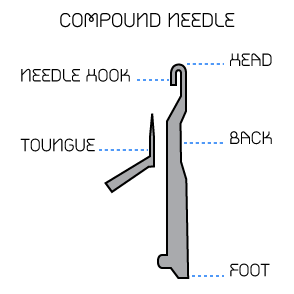
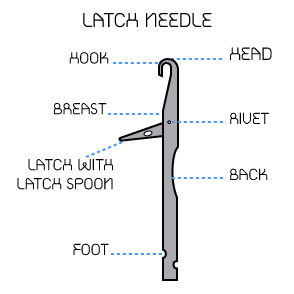
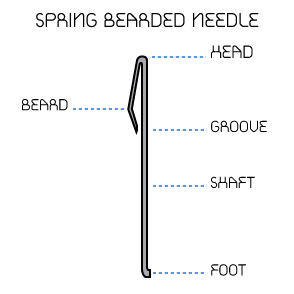
在圆机技术中,我们主要使用钩针及其运动。
一层平布的编织过程由不同的同步动作组成。
让我们从机械的基本设置开始:无缝机械的基本旋转方向是逆时针的。总共有八个进给。这意味着每个旋转周期产生八层。
在每个进给的末端进行针织形成。
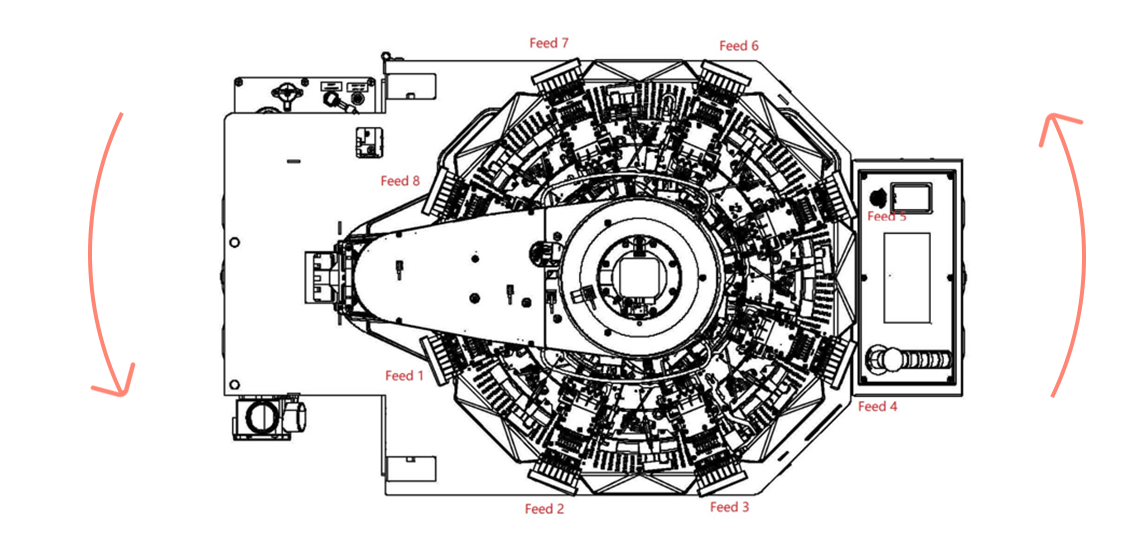
编织动作
一层平布的编织过程由不同的同步动作组成:
清理 — 饲料供给 — 钩闭合 — 上针 — 下沉 — 压倒 — 成环 — 收紧
下图显示了一种钩针和压住沉头在生产一层平布时的编织动作的六个步骤*。
*平布:平布是在配备了一组针的机器上生产的。平布针织在同一平面上并且在技术背面显示出半圆形的环,在正面呈现出V形的针迹,这给人以典型的经典外观和光滑的表面,与背面相比。面料在末端向前卷曲,在侧面向后卷曲。当你想要一个干净而光滑的表面时,这是一种很好的针迹。
1-2. Tucking in the hook or rest position. The sinker is forward, holding down the old loop whilst the needle rises from the rest position.
3. Clearing. The needle has been raised to its highest position clearing the old loop from its latch.
4. Yarn feeding. The sinker is partially withdrawn allowing the feeder to present its yarn to the descending needle hook and also freeing the old loop so that it can slide up the needle stem and under the open latch spoon.
5. Knock-over. The sinker is fully withdrawn whilst the needle descends to knock over its old loop on the sinker belly.
6. Holding-down. The sinker moves forward to hold down the new loop in its throat whilst the needle rises under the influence of the up throw cam to the rest position where the head of the open hook just protrudes above the sinker belly.
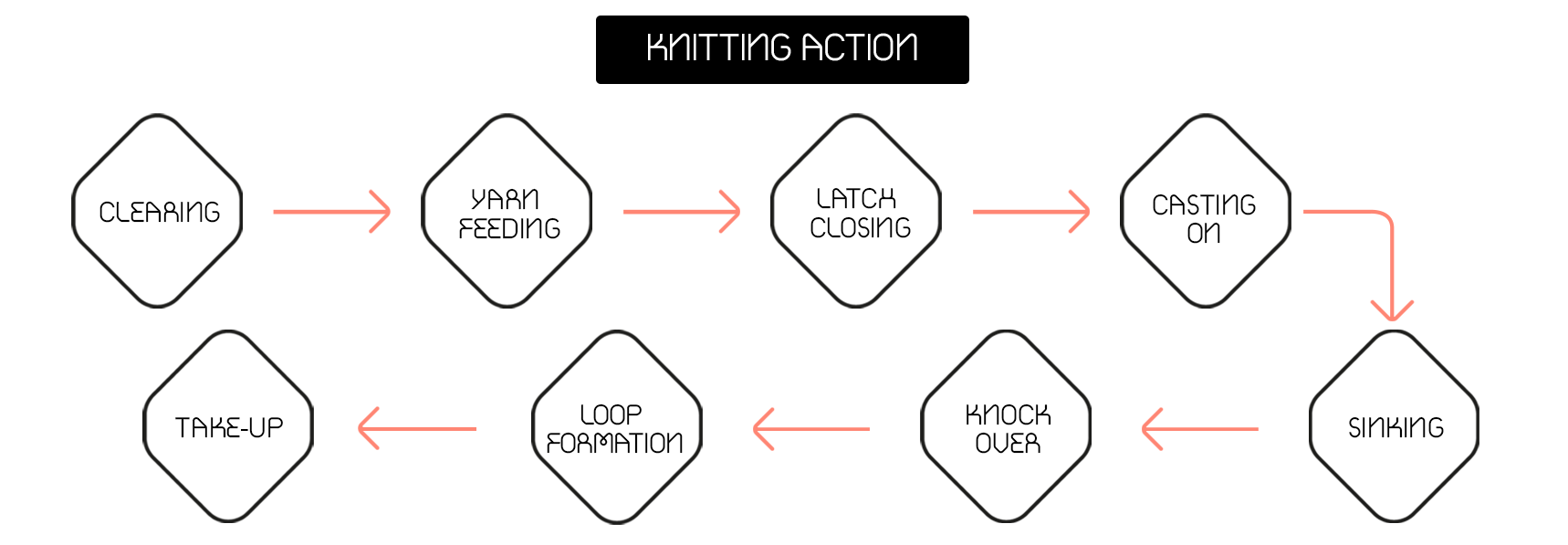
Cam Setup and Yarn Fingers
For the pattern set in iPolaris it is recommended to create basic know-how related to the most common cam set up, yarn finger positioning and macro levels. This will help when working on the pattern plane.
Cam Setup
Cams act directly on the needles or dial jacks butts. The cams are used to control the movement of the needles or dial jacks, and when the cams work, the needles and dial jacks move along their tracks. This is a sliding piece, generally used for timed motion.
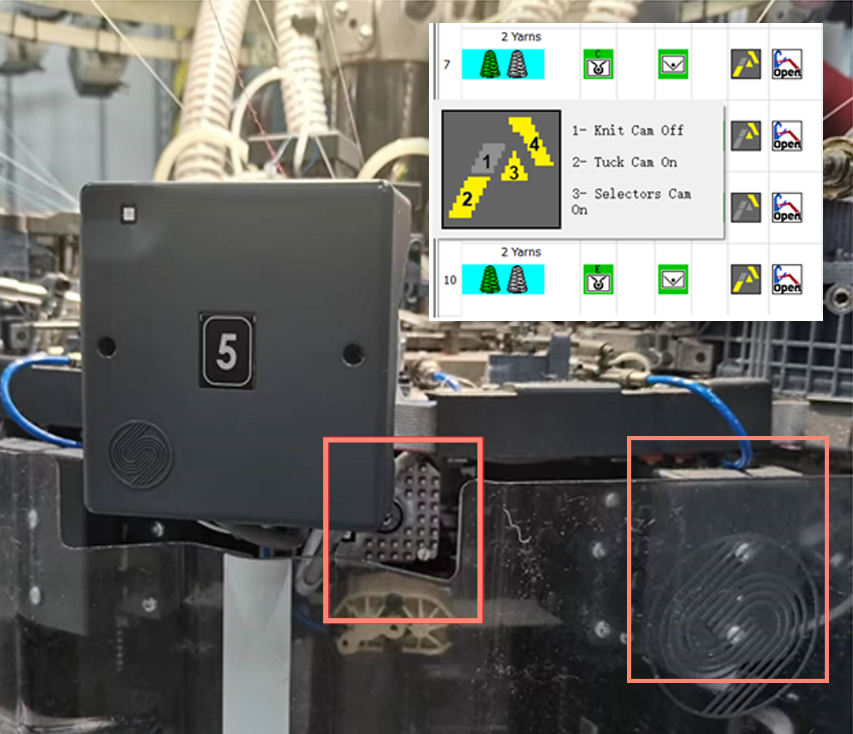
Yan Fingers
Yarn fingers are used to feed the yarns to the machine needles. The different positions of the fingers can facilitate the exit of the yarn from the needles, avoid the yarns to be discarded, they can also be brought closer to the needles to avoid other feeders, among other features.
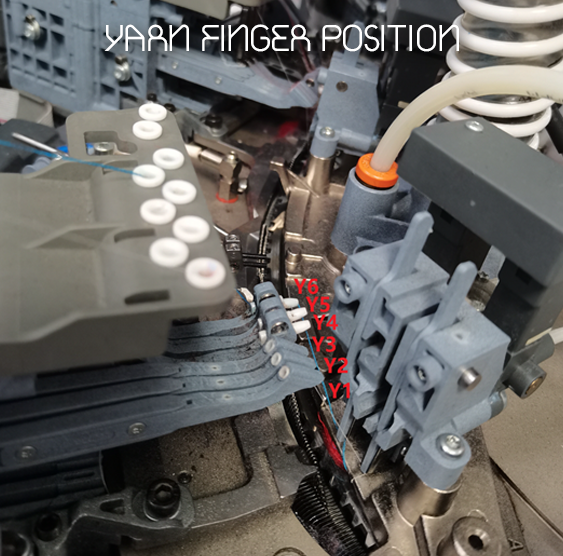
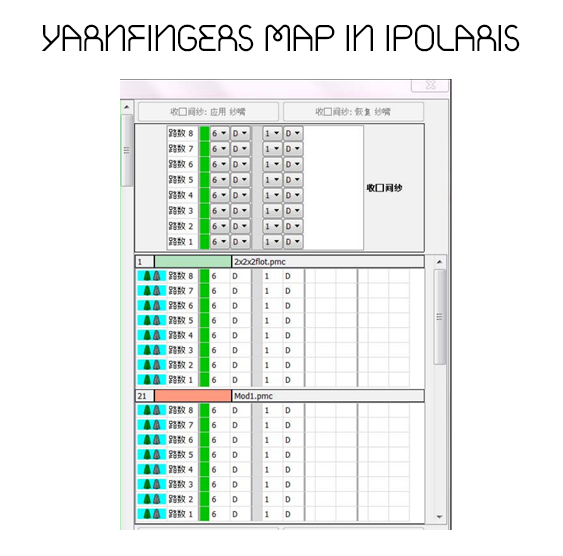
Summary
As you were able to see, the basic elements of the knitted structures and the machinery complement each other. Knowing about this basic concept and elements will allow you to know more about the way a knitted material is built, it will provide you with technical knowledge to better communicate with your team, and, it will allow you to explore and the possibilities and limits of the structures and machines.
If you are interested in learning more, we recommend to review or showcases on Yarns and Stitches to complement this knowledge.
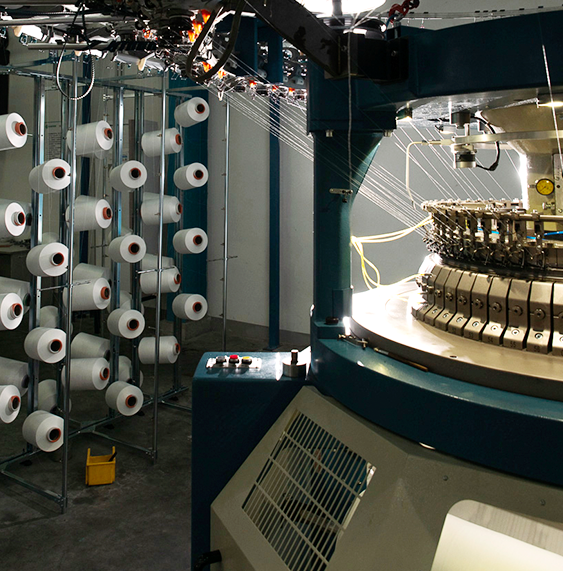
Glossary
Compound Needle: This is a needle used in warp and weft knitting. The hook of the needle closes by a tongue moving vertically to form a stitch, the needle must be closed to form it.
Latch Needle: This needle has a small hook and a latch that moves to close the hook.
Spring Bearded Needle: This needle has a long terminal hook that gets closed during casting off by a device known as a presser, after being pressed, the hook returns to its original position. This type of needle is commonly used in the production of fine fabrics.
Macro: Function used to insert and remove cams inside of a chain without programming reference degrees.

Request a personalized consultancy in seamless machinery
